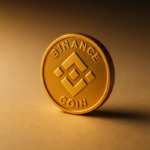In a recent interview with CNBC, John D’Agostino, Head of Institutional Strategy at Coinbase, addressed the ongoing debate regarding Bitcoin and gold. He emphasized that this discussion is not about choosing one over the other, likening it to the debate over sports legends Michael Jordan and LeBron James. D’Agostino highlighted that for investors focused on inflation caused by increasing monetary supply, both assets can coexist in a diversified portfolio.
Bitcoin offers unique advantages over gold, according to D’Agostino. He pointed out that Bitcoin is a digital asset, which makes it easily transferable across borders without the physical constraints associated with gold. Furthermore, he noted that Bitcoin can generate returns, contrasting it with gold, which incurs a negative cost of carry.
Over the past few months, market dynamics have shifted, with gold notably outperforming Bitcoin. Currently, gold is trading at approximately $3,900 per ounce, reflecting a 47% increase year-to-date. In comparison, Bitcoin’s value stands at around $122,000, which has risen by 24% in the same timeframe. D’Agostino remains optimistic about Bitcoin’s potential, particularly due to substantial amounts of capital currently held in money market funds.
He shared insights on how macroeconomic factors influence investment decisions. With trillions of dollars sitting in money markets, earning returns of around 4.5% to 5.5%, many investors may feel secure about their inflationary targets. However, as interest rates are expected to decline—the Federal Reserve recently cut rates for the first time this year—D’Agostino anticipates that a portion of this capital will eventually flow into Bitcoin and similar assets.
Market expectations are high for further reductions in interest rates, with traders indicating a 97% probability of an additional 25-basis-point cut at the Federal Reserve’s next meeting. This environment may create opportunities for Bitcoin to attract more institutional interest.
Addressing the prospect of institutional adoption, D’Agostino downplayed the notion of a significant “institutional wave” for Bitcoin. His comments reflect the complexities of current market conditions and the unique positioning of digital assets in the financial landscape, suggesting that investor interest may evolve as economic factors change.







